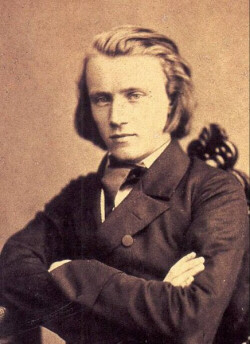Brahms Festival a knock-out at Davies Symphony Hall
Ah, Bach, Beethoven and Brahms. There is a reason Brahms is elevated as one of Western Music’s masters–his truths are human truths. His delicacy has a restraint born of love and his grandeur speaks of the inevitability of time. And the deep sadness and arresting beauty of his themes? Perhaps it derives from a fin de siècle view of life’s hopes wedded to mortality.
The San Francisco Symphony has dedicated May to Brahms, exploring orchestral and chamber works that are sometimes taken for granted. Last weekend the festival opened with two well-loved works, his Piano Concerto No. 2 and Symphony No. 4.
Staying over from last month’s recital with S.F. Performances (April 30 Piedmont Post ), pianist Leif Ove Andsnes tackled Brahms’ monumental concerto. Recently performed by the Oakland Symphony, one could instantly hear the difference made by a top-notch pianist in a World-class performance hall. And it sure doesn’t hurt to fund the orchestra with enough practice and performances to perfect their sound!
But Saturday’s performance would have been exceptional on any stage. A distant-sounding horn called out the theme, a call to the hunt which the piano answered and elaborated. French horns questioned, and Andsnes replied with the great opening cadenza, shaping phrases into dramatic runs and ripe pauses.
Brahms’ mature architecture sets brilliant waves of piano against deep thrums of pizzicato, slow piano trills against horns, and takes us from the extraordinary sweetness of violins to grand and stately breadths. Michael Tilson Thomas conducts with a relaxed clarity, a pas de deux with piano where each partner enjoys the other’s strength.
And then the show stopper! Conducting with elegance, Michael Tilson Thomas led the symphony in a performance of Brahms’ Symphony No. 4 that was definitive. Without recourse to multiple studio takes, every element was just right. Clean-cut textures, gorgeous blocks of chords, eloquent dynamics, and a great sense of balance propelled this work.
The sinuous theme, descending thirds and rising sixths, carries a sense of beauty and loss that grips the listener. Brahms develops and varies this, then introduces the horns with dark majesty and inevitability.
The slow second movement, written in the ancient Lydian Church mode, carries a delicate sorrow. Again Brahms lays the foundation with French horn, then builds with slender woodwinds. These careful gestures are brightly polished, holding gossamer tensions that suddenly tighten into imperious triplets or horn calls.
The C major third movement is surprisingly bright after the darkly sublime second, complete with a false finale, setting the stage for a powerful return to E minor. Brahms opens and closes his fourth movement with commanding ascending chords straight out of a Requiem, a deeply satisfying resolution with the finality of death.
The Festival continues May 15 – 17 with Brahms’ Variations on a Theme of Haydn and Piano Concerto No. 1, with Yefim Bronfman on piano. Tickets and information are available at www.sfsymphony.org
—Adam Broner
Originally published in the Piedmont Post
photo of the young Johannes Brahms
